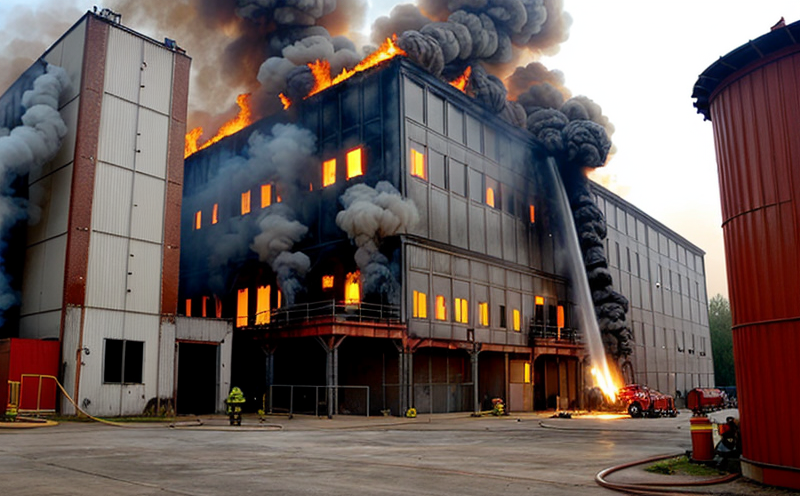Fire Safety in Industrial Settings: A Comprehensive Guide
Industrial settings pose a unique set of fire hazards due to the presence of flammable materials, equipment, and processes that generate heat and sparks. The consequences of a fire in an industrial setting can be catastrophic, resulting in loss of life, property damage, and environmental harm. Therefore, it is essential for industries to prioritize fire safety measures to prevent, detect, and respond to fires effectively.
Fire Hazards in Industrial Settings
Industrial settings present various fire hazards due to the nature of their operations. Some common fire hazards include:
Electrical Fires: Faulty electrical equipment, wiring, or lighting can cause electrical fires, especially in areas with high temperatures or humidity.
Hot Work: Welding, cutting, and other hot work processes generate sparks that can ignite flammable materials.
Flammable Liquids: Storage tanks containing flammable liquids such as gasoline, diesel, or solvents pose a significant fire hazard if not properly maintained or handled.
Ignition Sources: Smoking, open flames, and spark-producing equipment can ignite fires in areas where flammable materials are present.
Fire Safety Measures
To mitigate the risks of fire in industrial settings, it is crucial to implement effective fire safety measures. Some essential measures include:
Conducting Regular Fire Risk Assessments: Identify potential fire hazards and develop strategies to prevent or minimize their occurrence.
Implementing Fire Prevention Programs: Educate employees on fire safety practices, such as proper handling of materials, regular equipment maintenance, and reporting hazards.
Installing Fire Detection and Suppression Systems: Detect fires early with sensors and alarm systems, and suppress them quickly with fire suppression agents or sprinkler systems.
Providing Emergency Response Training: Train employees in emergency response procedures, including evacuation, firefighting, and first aid.
Firefighting Equipment and Procedures
In the event of a fire, having proper firefighting equipment and procedures in place is crucial for effective response. Some essential elements include:
Fire Extinguishers: Ensure that fire extinguishers are readily available, easily accessible, and properly maintained.
Fire Alarm Systems: Install fire alarm systems that detect fires early and alert personnel to respond quickly.
Emergency Response Plans: Develop comprehensive emergency response plans that outline procedures for evacuation, firefighting, and first aid.
Inspections and Maintenance
Regular inspections and maintenance of equipment and facilities are critical to preventing fires. Some key areas to focus on include:
Equipment Inspection: Regularly inspect equipment such as electrical gear, compressors, and pumps for signs of wear or damage.
Facility Inspection: Inspect facilities for potential fire hazards, including storage areas, electrical panels, and ignition sources.
Maintenance Scheduling: Schedule regular maintenance tasks to ensure that equipment is properly serviced and repaired.
Fire Safety Training
Employee training on fire safety practices is essential for preventing fires and responding effectively in the event of a fire. Some key aspects of fire safety training include:
Fire Prevention Techniques: Educate employees on proper handling of materials, regular equipment maintenance, and reporting hazards.
Emergency Response Procedures: Train employees in emergency response procedures, including evacuation, firefighting, and first aid.
Regular Training Sessions: Schedule regular training sessions to ensure that employees are aware of fire safety practices and procedures.
QA Section
1. What is the most common cause of fires in industrial settings?
The most common causes of fires in industrial settings include electrical faults, hot work accidents, and ignition sources such as smoking or open flames.
2. What type of training should employees receive on fire safety practices?
Employees should receive regular training sessions on proper handling of materials, equipment maintenance, emergency response procedures, and reporting hazards.
3. How often should fire extinguishers be inspected and maintained?
Fire extinguishers should be inspected monthly to ensure that they are fully charged and functioning properly. They should also be replaced according to manufacturers recommendations.
Conclusion
Fire safety in industrial settings requires a comprehensive approach that includes prevention, detection, and response measures. By implementing regular fire risk assessments, conducting employee training sessions, installing fire detection and suppression systems, and maintaining equipment and facilities, industries can reduce the risks of fire and ensure a safe working environment for employees.

































